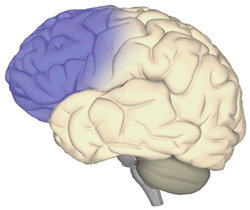Traumatic brain injury (TBI) is a complex issue for a variety of reasons. First, many cases of TBI go undiagnosed for months or even years. Since patients with head injuries often times have other injuries, the brain trauma may not receive the attention it deserves.
Another problem with head injury is that it often results in psychological symptoms that can complicate the diagnosis and treatment. Traumatic brain injury can result in depression, changes in personality, anxiety, paranoia, or apathy. One of the most frustrating and challenging symptoms is aggression.
The authors of a current study on aggression after brain injury stated the problem succinctly:
“Associations between TBI and neuropsychiatric disorders have been recognized for many years. Aggressive behavior is one of the most socially and vocationally disruptive consequences of these neuropsychiatric disorders. Aggression endangers the safety of patients, families, and caregivers. It may prevent patients from receiving the care that they need and disrupt their rehabilitation process. Estimates of the frequency of aggressive behaviors during the acute period after TBI have ranged from 11% to 96%.”
In this study, the researchers assessed 89 patients with TBI and 26 patients with multiple traumas, but without TBI. All of the TBI patients in the study had post-traumatic amnesia that lasted at least 30 minutes.
Aggressive behavior was assessed with the Overt Aggression Scale (OAS). The OAS allows clinicians to quantify aggression by defining four categories of aggressive behavior: verbal aggression, physical aggression against objects, physical aggression against self, and physical aggression against others. All patients also received a thorough psychiatric assessment. The authors found the following:
 The frontal lobe (shown here in blue) regulates higher “executive” functions of the brain, such as conscious thought, memory, intelligence, concentration, behavior, and personality. Injury to the frontal lobe can result in aggression in some patients.
The frontal lobe (shown here in blue) regulates higher “executive” functions of the brain, such as conscious thought, memory, intelligence, concentration, behavior, and personality. Injury to the frontal lobe can result in aggression in some patients.
Clearly, patients with a history of closed head injury and aggressive behavior are at a disadvantage when it comes to receiving proper treatment and vocational rehabilitation. The authors of this current study conclude:
“In summary, aggression following TBI is associated with multiple biological and psychosocial factors, including major depression, substance abuse, and impaired social function as well as the presence of brain injury involving the frontal lobe. These findings suggest that interventions aimed at treating major depression or substance abuse and improving social function may help reduce episodes of aggression in patients who have suffered traumatic brain injury.”
- Patients with TBI were much more likely to exhibit aggression. In the TBI group, 33.7% met the criteria for aggressive behavior in the first six months after injury, while only 11.5% of the non-TBI patients did.
- Within the TBI group there were no significant differences between the aggressive and the non-aggressive groups in age, gender, race, years of education, socioeconomic status, or history of anxiety disorder.
- There was a strong relationship between depression and aggression: of the 30 aggressive patients, 17 also met the criteria for major depression.
- Aggressive patients also suffered from poorer social functioning.
- Patients with aggressive behavior were more likely to have injuries to the frontal lobe. While non-aggressive patients were more likely to have diffuse brain injuries.
- Patients with aggressive behavior had a significantly higher frequency of legal interventions for aggressive behavior prior to the brain injury, and were more likely to have a history of drug or alcohol abuse.
Clinical Implications
Aggression after an injury may be due to brain damage. Patients that show signs of aggression should be carefully evaluated for the existence of head injury, and proper treatment should be sought out.
Tateno A, Jorge RE, Robinson RG. Clinical correlates of aggressive behavior after traumatic brain injury. Journal of Neuropsychiatry and Clinical Neurosciences 2003;15:155-160.